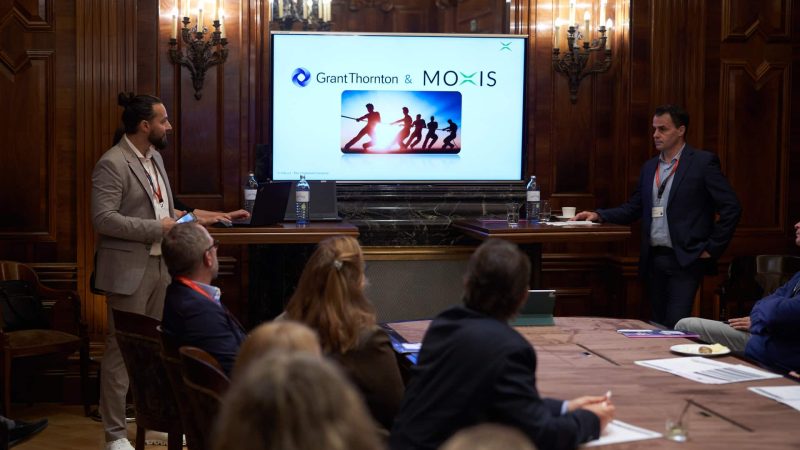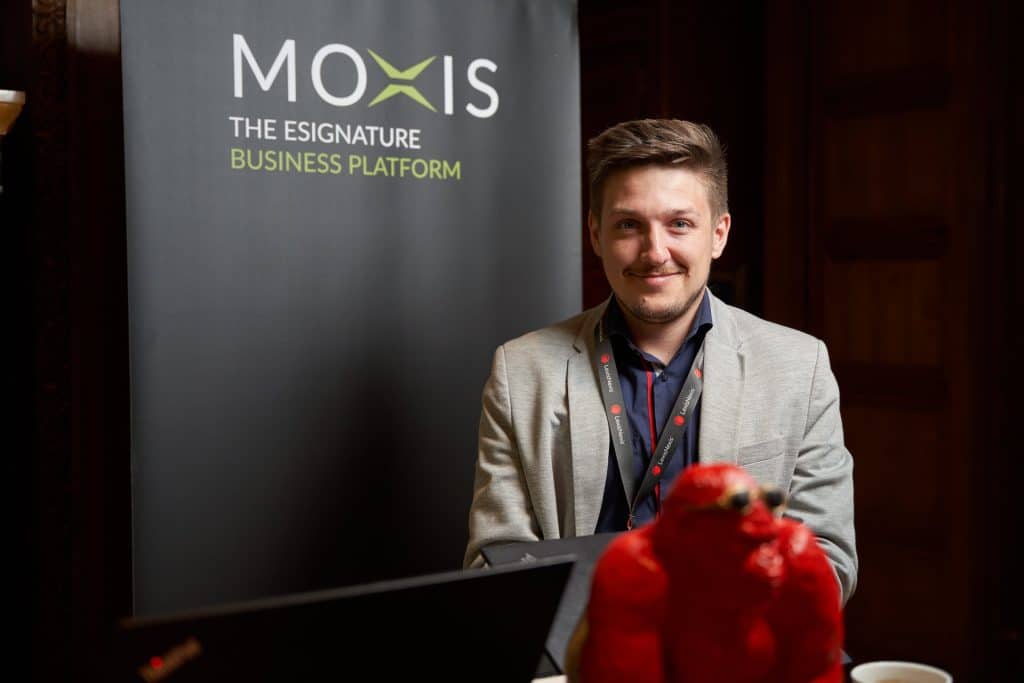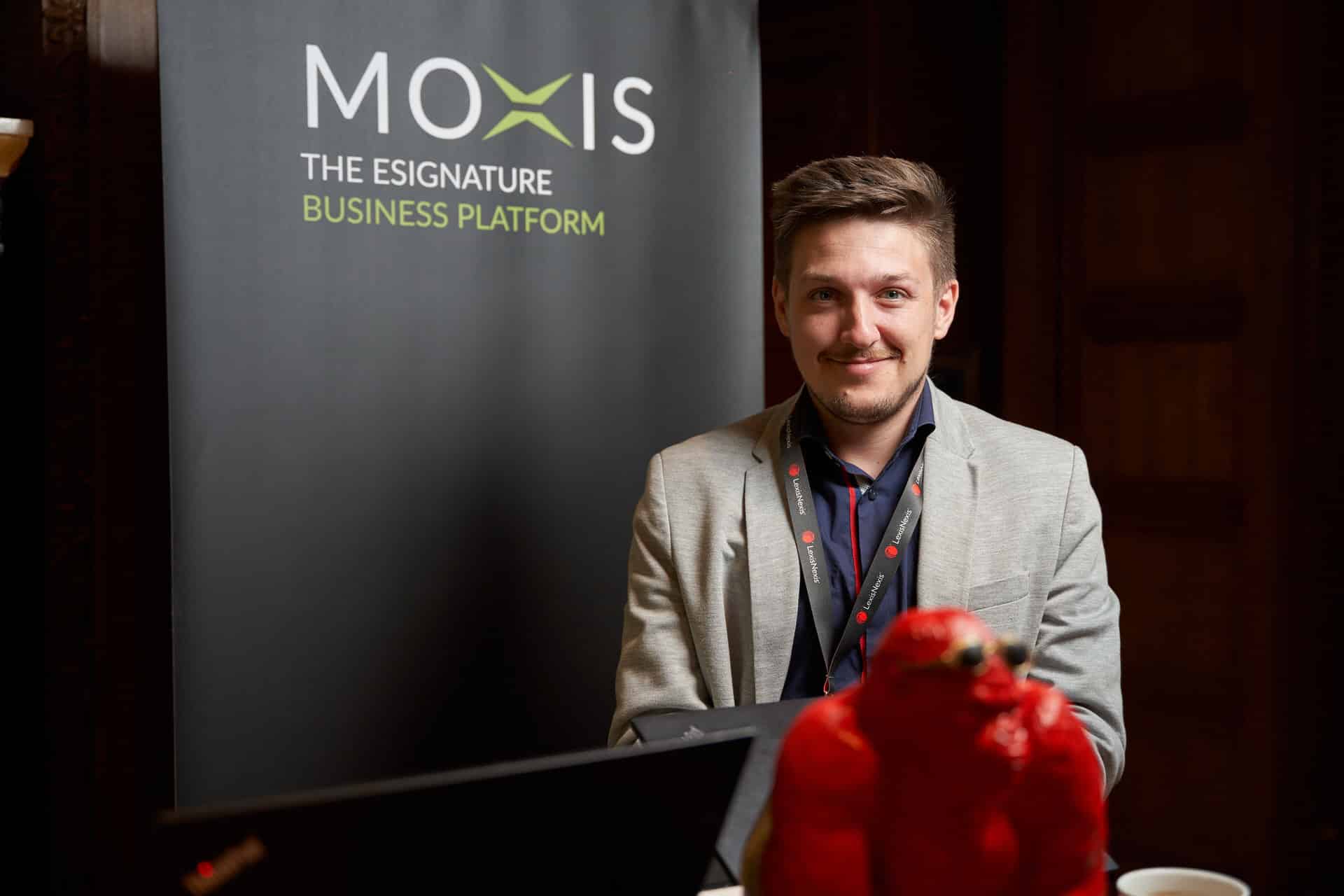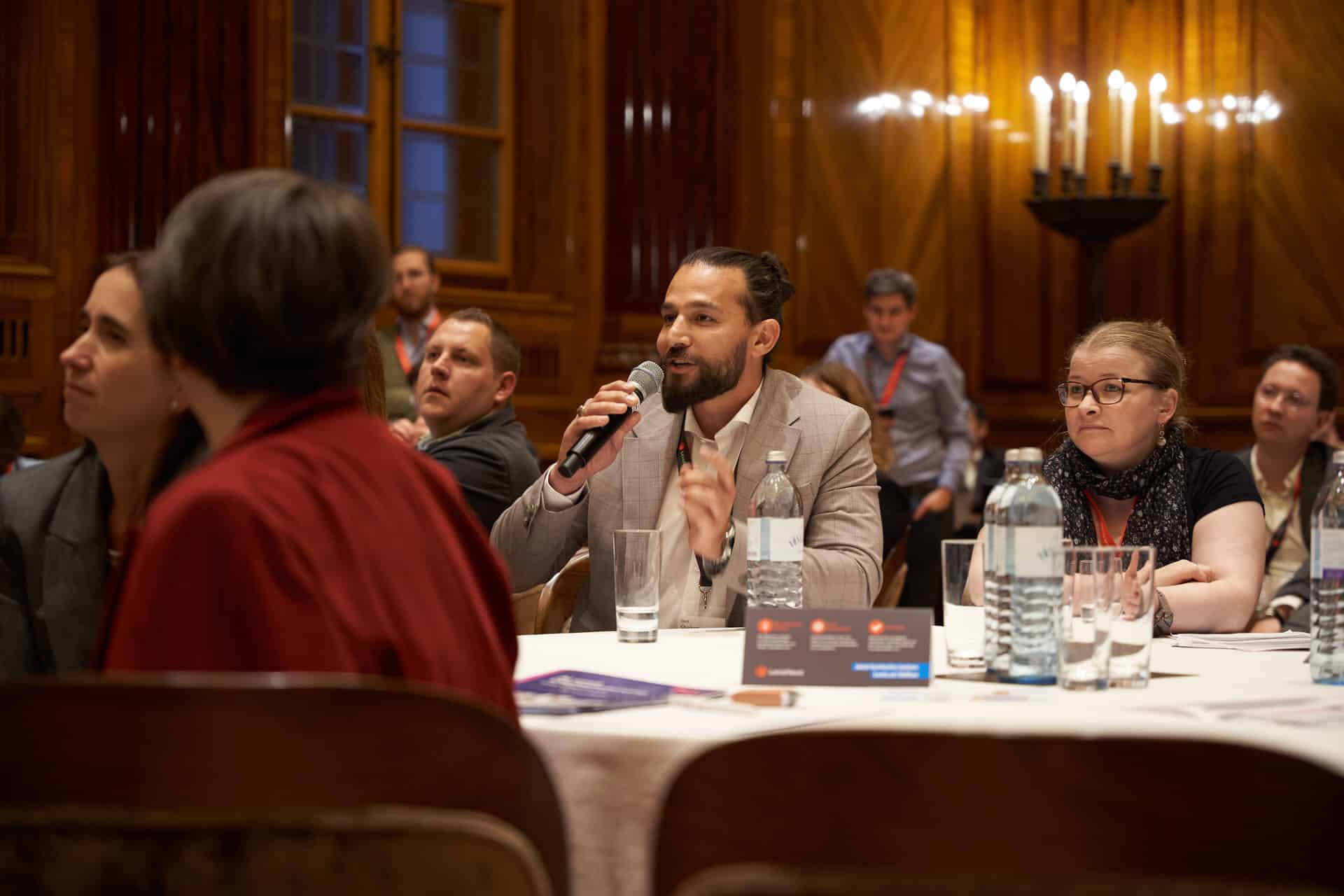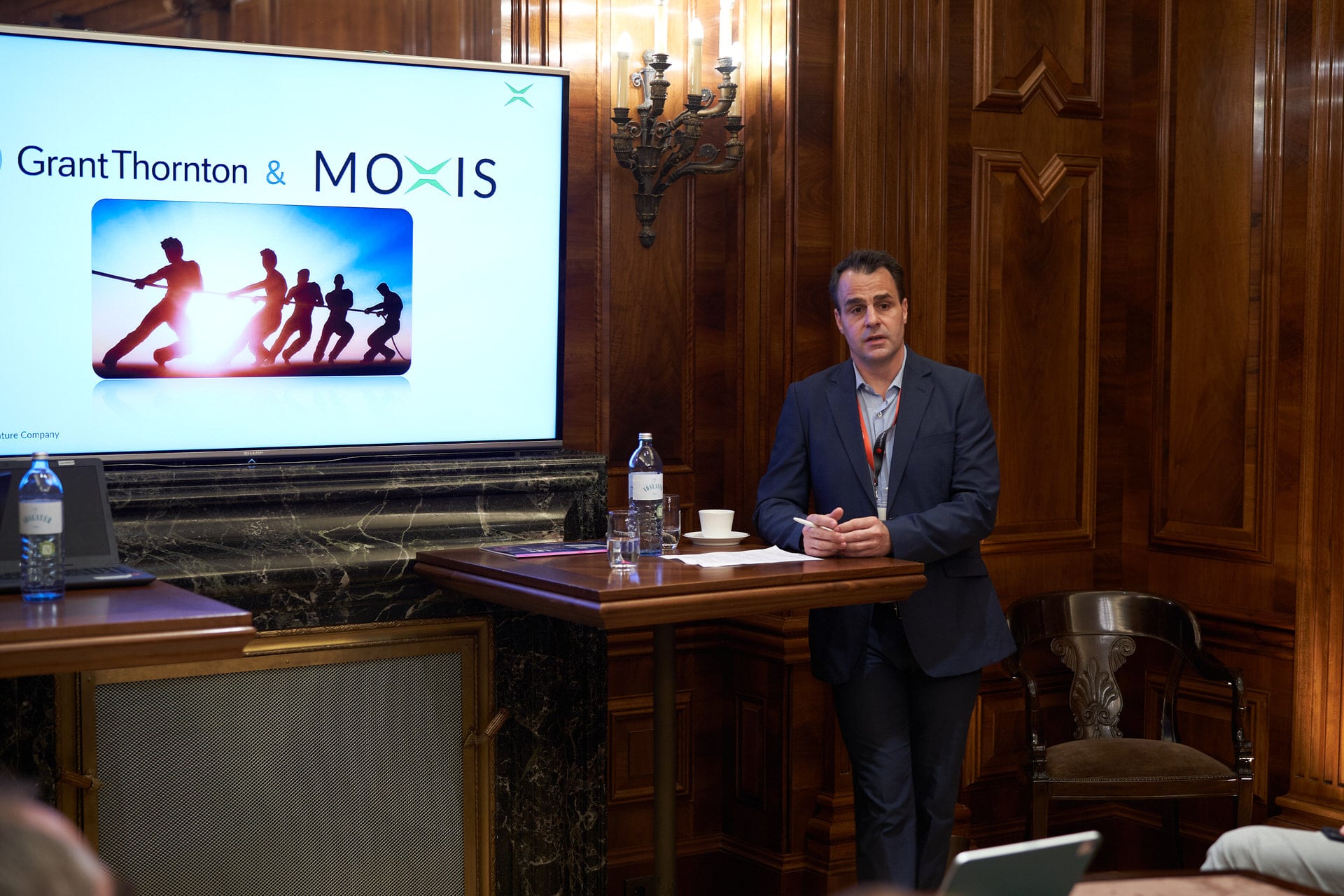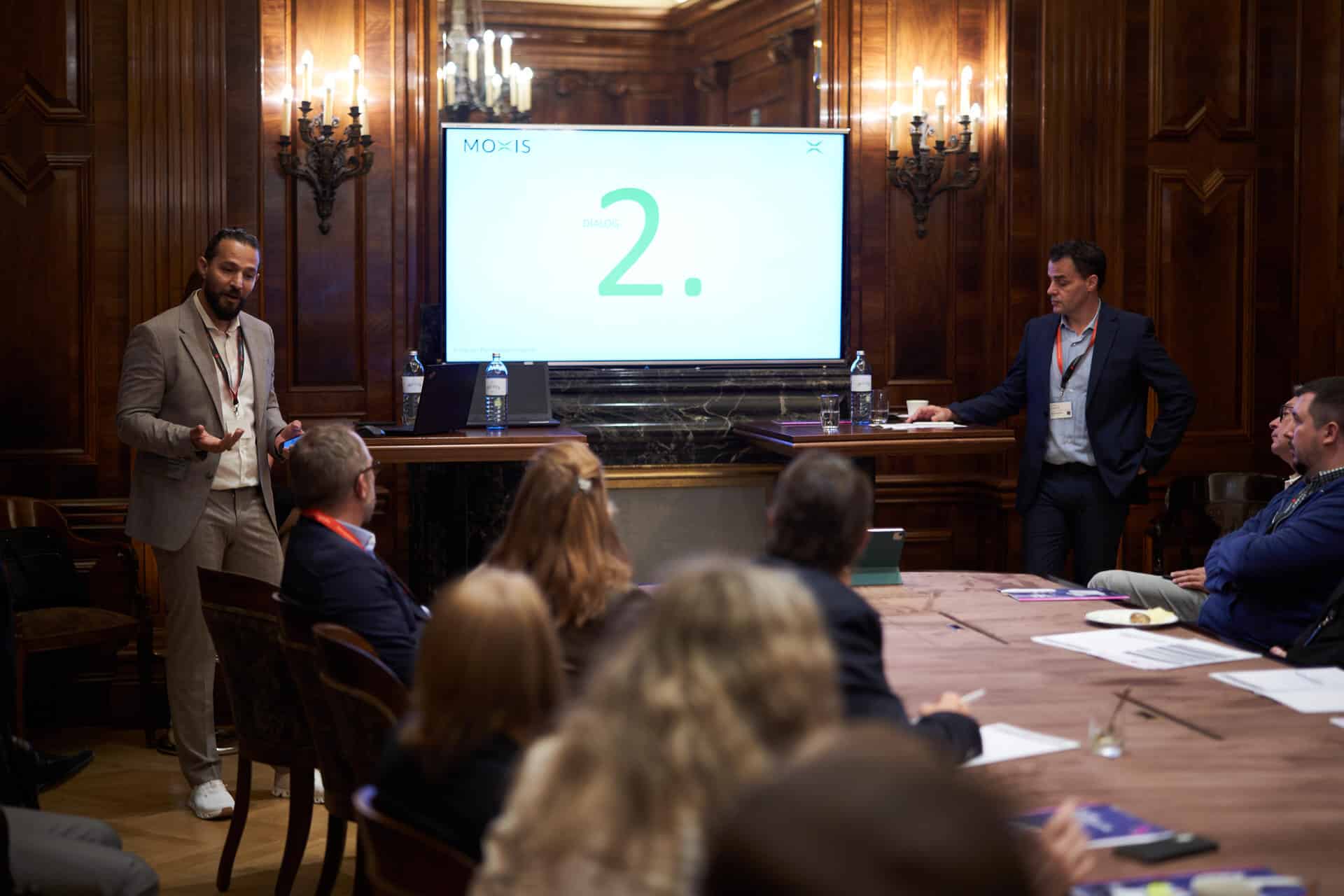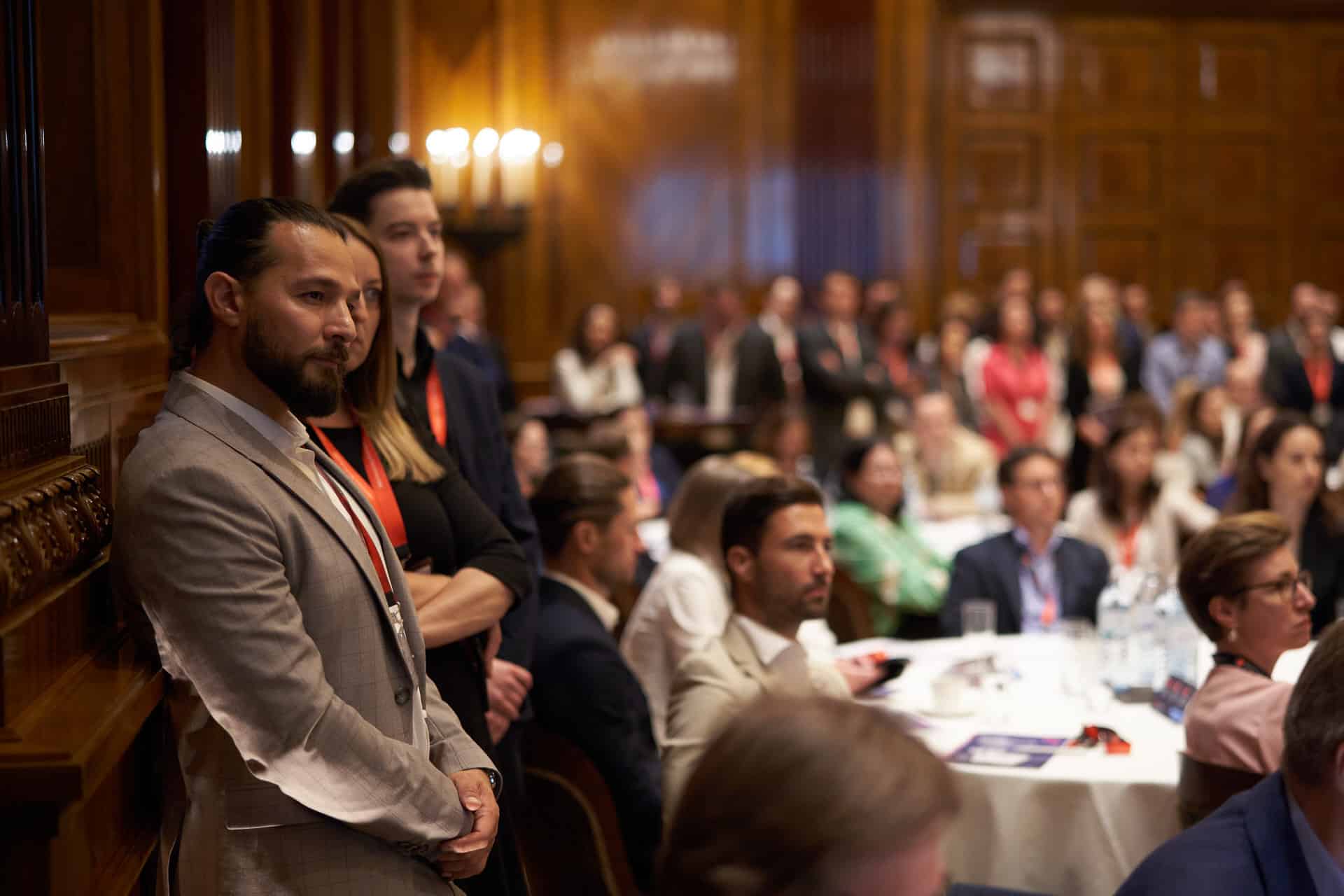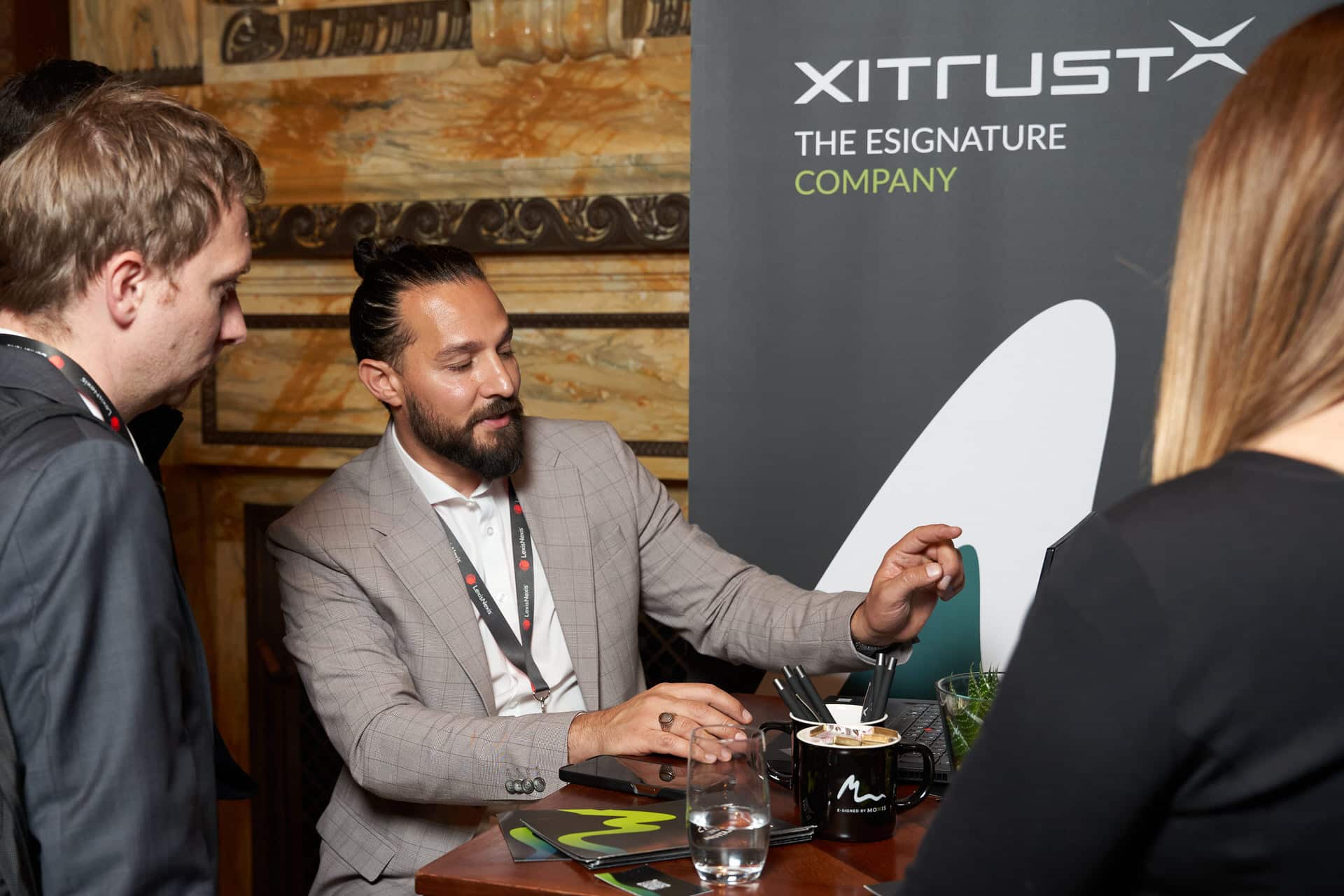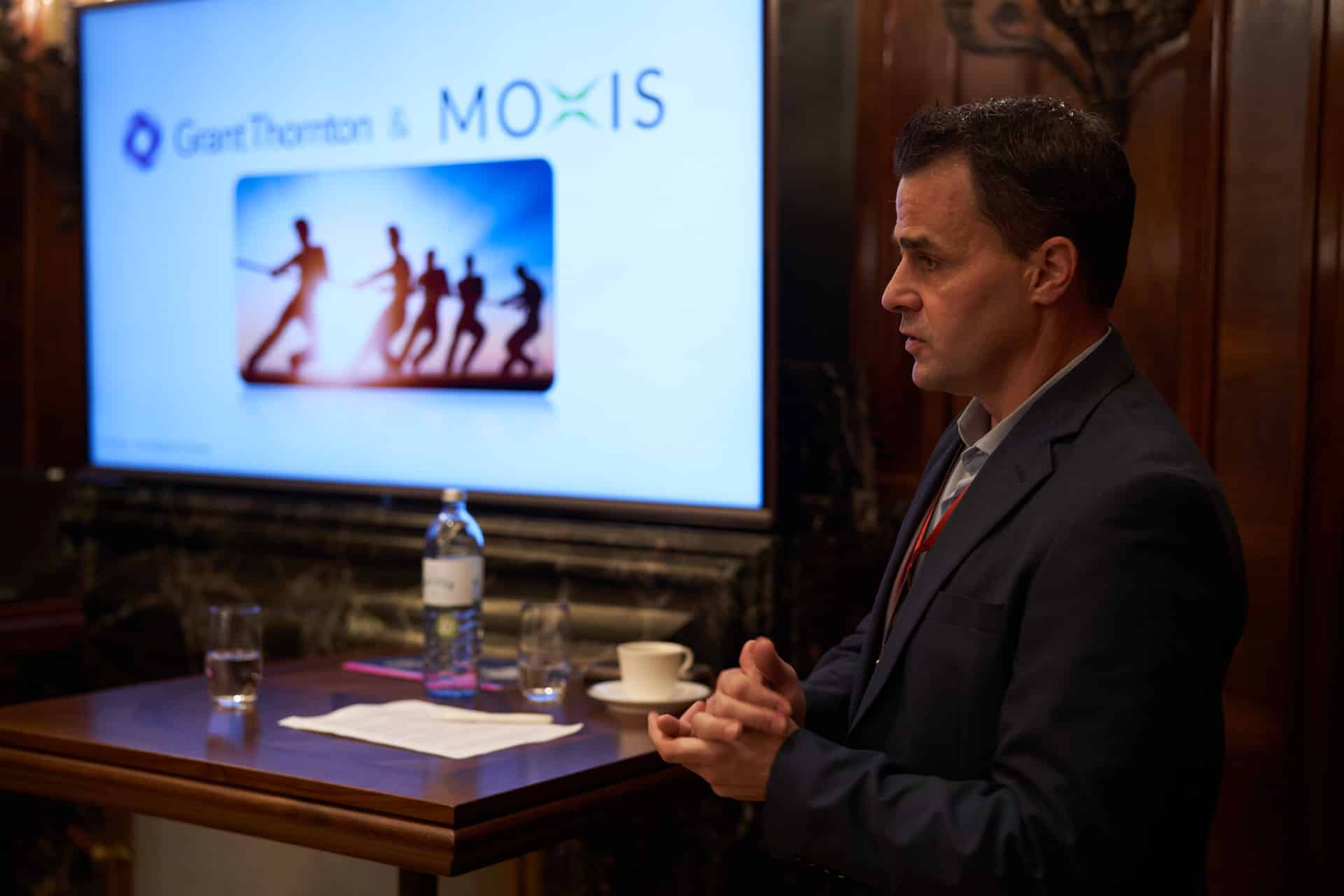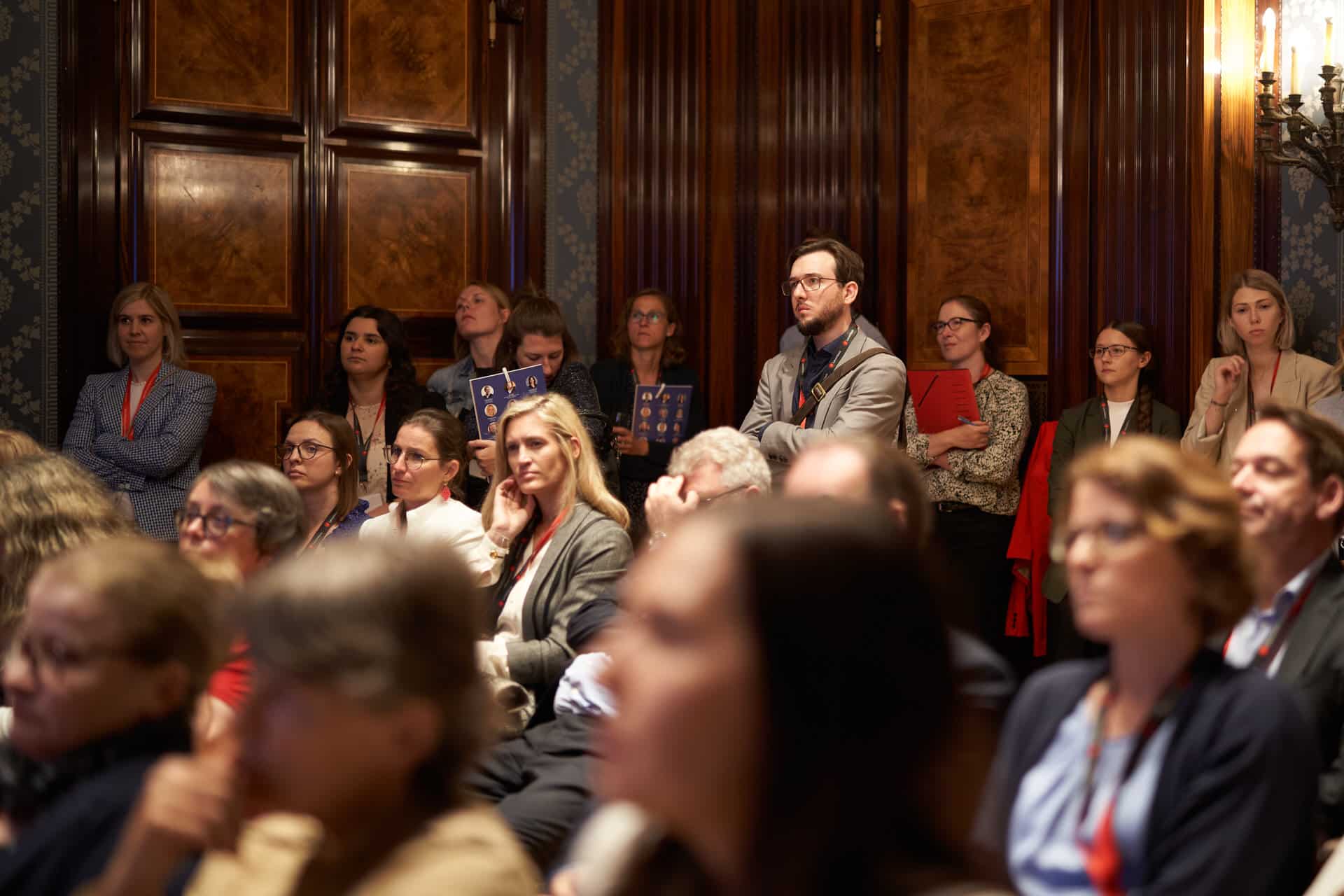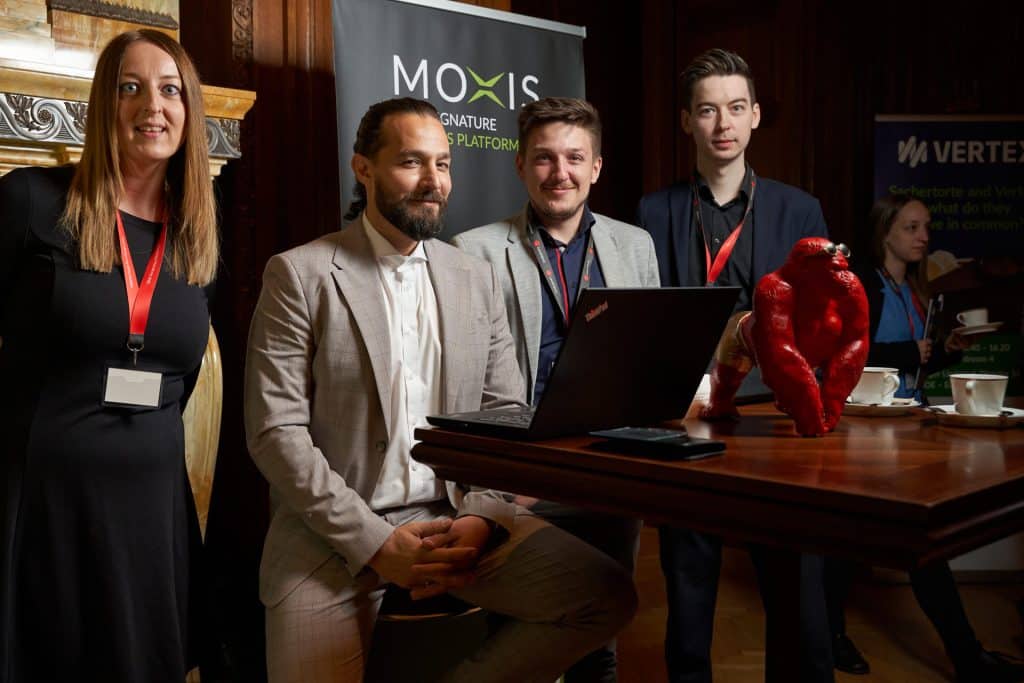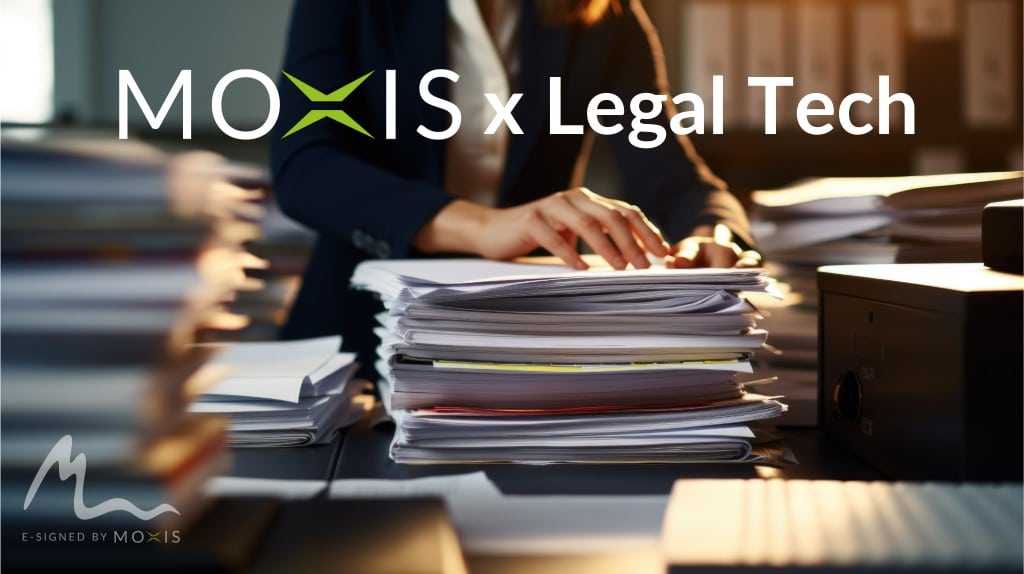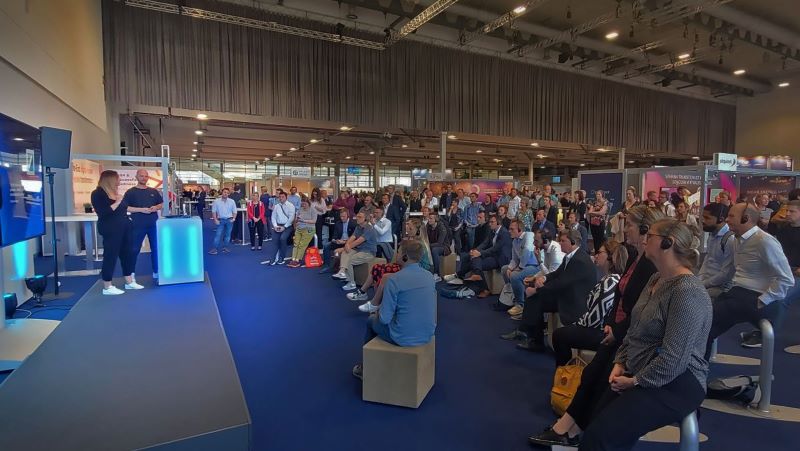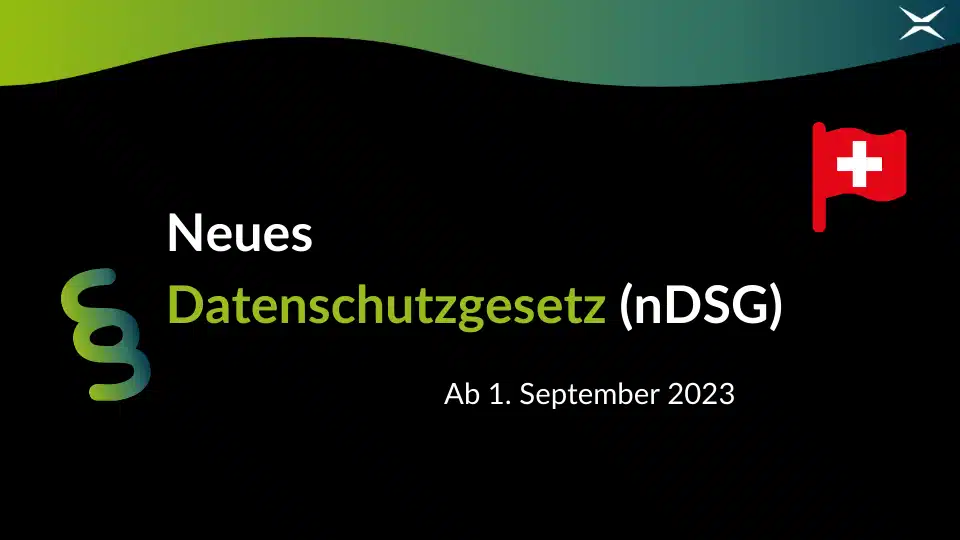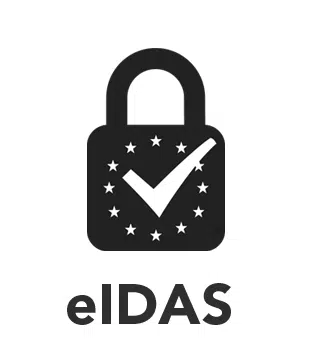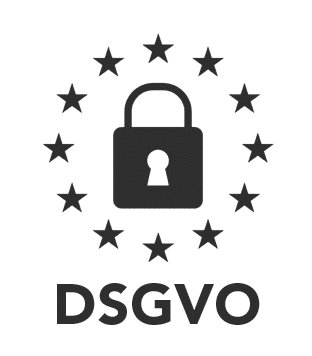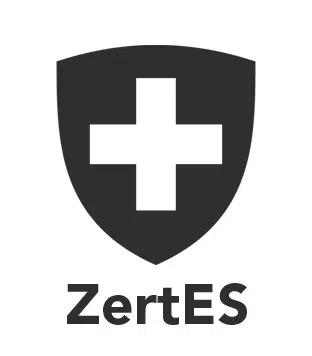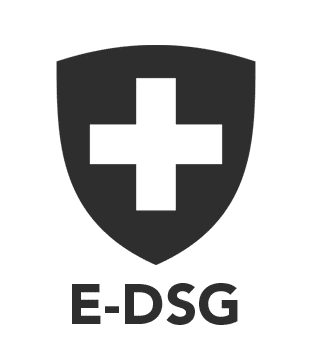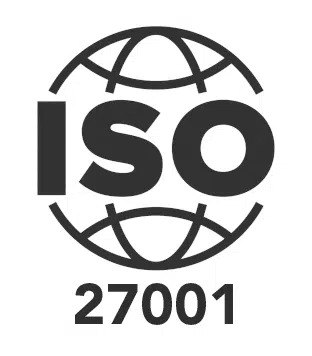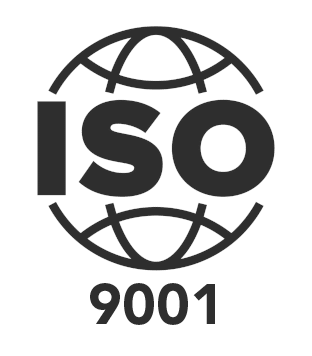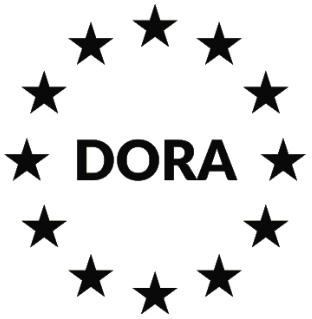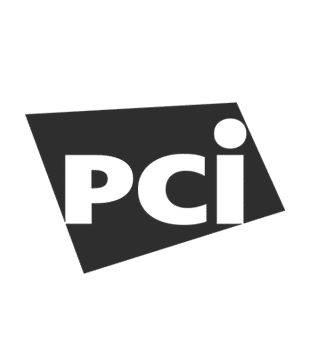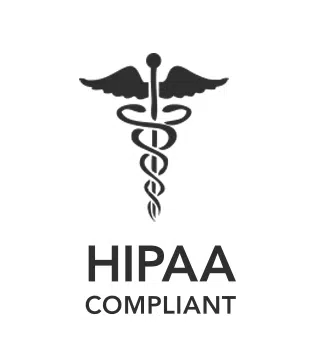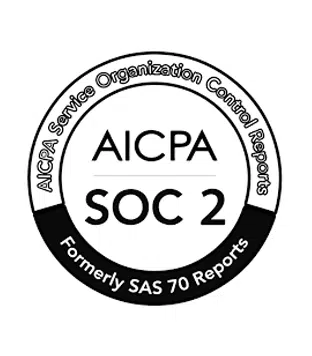David, this was your first time at the Tax Tech Conference. Tell us what it was all about and your impressions of the event?
The event was great, very well attended and with lots of interesting exhibitors. The Tax Tech focused on technical innovations and opportunities to use technology in the tax consulting industry as efficiently as possible and, in doing so, provide clients with more modern services and employees with a better working experience. For tax consultants, one of many important documents is the annual financial statement, which ultimately requires two qualified signatures – from the client and the tax consultant. And it is precisely this gap in the process that we can close with MOXIS. That was our mission on site, to optimise the working reality of the industry.
What was your presentation about?
For our presentation, we teamed up with our client Grant Thornton. We talked about the use of digital signatures in the tax consultancy environment. After a brief introduction to MOXIS, we presented two features that we believe are particularly relevant for the industry. Firstly, the batch signature, which allows you to sign up to 100 documents with just one click. And secondly, the PDF container, which enables you to integrate other files, such as Word documents or Excel tables, into a PDF and thus sign them implicitly while creating a digital link. Christoph Schmidl from Grant Thornton then answered 10 questions for us, ranging from basic digitalisation strategies and the willingness of organisations to embrace transformation right through to the questions that every company asks itself when it is in the process of selecting digital solutions.
What did you think of the response to the presentation? Was there any direct feedback?
Directly after the presentation, many people came to us and said: “That’s exactly what we need.” In the tax sector, many work steps are already carried out electronically. But others are still analogue. Especially when it comes to signatures, the old way of thinking still often prevails: People sign with a pen, on a piece of paper, at a meeting on site. I found it exciting to learn that many companies operate semi-digitally.
That documents are still printed out and scanned in again. And that documents are stored digitally but also filed in analogue form just to be on the safe side. This semi-digital way of working is sometimes even more time-consuming than non-digitalised processes. The BMD interface also plays a major role here. BMD is very widespread in the tax consultancy sector. This is why we have been working with the Austrian Systemhaus for many years and maintain an extremely good partnership.
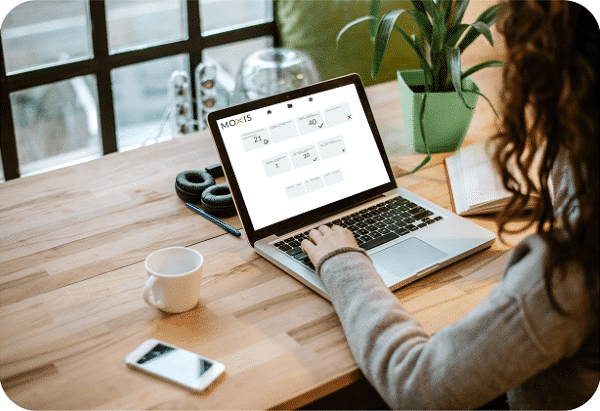
The BMD interface will also be the subject of the webinar on June 29th. Can you tell us a bit more about this?
We will be presenting a new interface at the webinar with BMD. At the moment, you have to set and sign the placeholders in BMD. So you do not work directly in the MOXIS interface and therefore not all features are available. The signature process runs via e-mail. This is exactly what will change with the new interface. In future, there will be a continuous process from triggering the signature in BMD to executing the transactions in MOXIS and automatically archiving them in BMD.
By the way: Unfortunately, the maximum number of participants for our webinar on 29 June has already been reached. The good news is that you can still receive the content of the webinar. Register and we will be happy to send you the recording of the webinar after the live event.
So the feedback on your presentation and on MOXIS was very positive. Did you get the impression that the topic of digital signatures was new to the conference attendees?
I think everyone in attendance had heard of digital signatures in some way before, knew about A-Trust and the mobile phone signature as well as ID-Austria or had already signed a document electronically. But not within their own company. That is why there were a few questions. How secure is the whole thing? What signature quality is needed for what? And what happens if clients are on site but still want to sign digitally? We were able to answer all these questions in our presentation, as well as in subsequent conversations with companies.
Speaking of questions, was there a particular question that kept coming up? Or a myth about digital signatures that you were able to clear up?
Many questions were related to the qualified electronic signature. The fact that this is the same as a handwritten signature and that there are clear legal regulations from the EU for this has repeatedly led to aha moments: “Ah, then we can use it for everything”. After all, annual financial statements must be signed by hand or by qualified electronic signature.
Many visitors were also unaware of how widespread the mobile phone signature or ID Austria already is in Austria. And that with over 3 million certificates issued, almost half of all adult Austrians can sign directly with a qualified signature.
Back to the topic of digital transformation. How far along is the tax sector in your opinion?
I think it is actually quite advanced. It is an industry that has been around for a very long time and many companies here are at a similar stage. Corona has given this a big boost: people are working semi-remotely, making team calls and using different software solutions. Tax advisors are very pragmatic people who always welcome time savings. The motivation is there, but often the final trigger or the person who ultimately takes it into their own hands is still missing. At the event, we met many of these people who have made it their mission to take the topic further. To make work more efficient, faster and safer.
And what are the major hurdles on the way to a paperless law firm? Do clients perhaps also have reservations about this?
The majority of clients would certainly welcome full digitalisation, but as in any other industry, there are always the stubborn 20% who are not so easy to convince. Whether internally or externally, the big challenge here is to master the balancing act between analogue and digital.
In my opinion, this can be solved with education as well as an intuitive and easy-to-use product. To counteract scepticism and a lack of trust, employees and management need to be brought on board. It is important to convince them that the e-signature is a must-have that can save a lot of time in the long term. At the same time, MOXIS also offers the option of signing with a QR code, for example. If we are both sitting in the same room and you do not want to receive the document to be signed by email, you can either sign it directly on my iPad screen or you can scan the QR code, look at the document in peace and then sign it on your own mobile device.
Could you add a few final words or an outlook for the industry?
David: We have already been able to win over a lot of customers from the tax consultancy sector this year and have realised how much interest and demand there is for MOXIS. People understand what digital signatures can achieve if the processes work digitally and consistently. The interaction with clients is taken to the next level: flexible signing without long letter routes and without having to be on site. When a tax consultancy firm is so progressive that contracts are signed digitally instead of with pen and paper, it also has a positive impact on their reputation. There is a sense of transformation in the industry, but like everywhere else, digital change does not happen overnight. It is important to embark on this journey together with a partner who stands for trust, security and collaboration.
